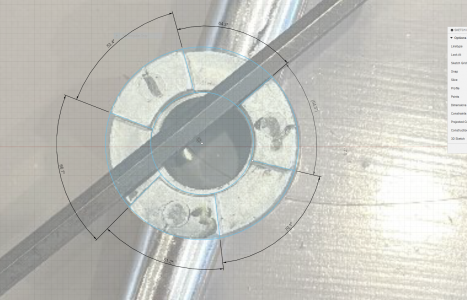- Joined
- Jun 12, 2023
- Messages
- 42
Thank you Flyinfool
I do have a really old version cad lite on a laptop somewhere. I will need to find it. I’m not the best at it but I do understand what you are explaining. Math and geometry are not my strong points. But I think they will be after getting into the hobby.
Basically measure the inside/outside dimensions of each segment and lay it out and connect the two to get the angles.
Lay out those dimensions on the new piece and set up for each cut. The rotary table probably isn't much good I don't think since the angles are not through the center. That could just be my lack of knowledge and experience in this case, but its no problem setting up each cut separately.
I was going to research the hand book to try to figure out the best way to determine those angles but this advice pointing in the direction I needed to do that. Greatly appreciated
Thank you
I do have a really old version cad lite on a laptop somewhere. I will need to find it. I’m not the best at it but I do understand what you are explaining. Math and geometry are not my strong points. But I think they will be after getting into the hobby.
Basically measure the inside/outside dimensions of each segment and lay it out and connect the two to get the angles.
Lay out those dimensions on the new piece and set up for each cut. The rotary table probably isn't much good I don't think since the angles are not through the center. That could just be my lack of knowledge and experience in this case, but its no problem setting up each cut separately.
I was going to research the hand book to try to figure out the best way to determine those angles but this advice pointing in the direction I needed to do that. Greatly appreciated
Thank you

